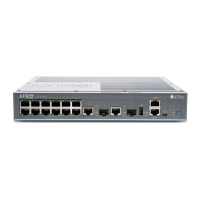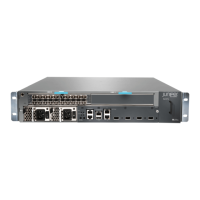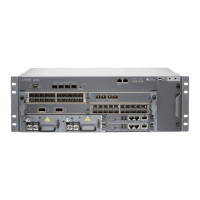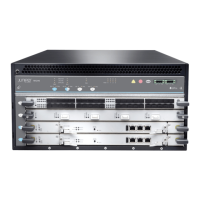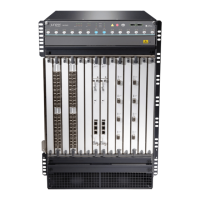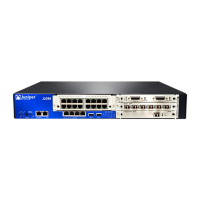Layer 2 Port Mirroring Named Instances Overview
On an MX Series router and on an EX Series switch, you can define a set of port-mirroring
properties that you can explicitly bind to physical ports on the router or switch. This set
of port mirroring properties is known as a named instance of Layer 2 port mirroring.
You can bind a named instance of Layer 2 port mirroring to physical ports associated
with an MX Series router’s or an EX Series switch’s Packet Forwarding Engine components
at different levels of the router (or switch) chassis:
•
At the FPC level—You can bind a named instance to the physical ports associated with
a specific Dense Port Concentrator (DPC) or to the physical ports associated with a
specific Flexible Port Concentrator (FPC).
•
At the PIC level—You can bind a named instance of port mirroring to a specific Packet
Forwarding Engine (on a specific DPC) or to a specific PIC.
NOTE: MX Series routers support DPCs as well as FPCs and PICs. Unlike
FPCs, DPCs do not support PICs. In the Junos OS CLI, however, you use FPC
and PIC syntax to configure or display information about DPCs and the Packet
Forwarding Engines on the DPCs.
The following points summarize the behavior of Layer 2 port mirroring based on named
instances:
•
The scope of packet selection is determined by the target of the binding—At the ports
(or port) bound to a named instance of Layer 2 port mirroring, the router or switch
selects input packets according to the packet-selection properties in the named
instance.
•
The destination of a selected packet is determined by the packet address family—Of
the packets selected, the router or switch mirrors only the packets belonging to an
address family for which the named instance of Layer 2 port mirroring specifies a set
of mirror destination properties. In a Layer 2 environment, MX Series routers and EX
Series switches support port mirroring of VPLS (family ethernet-switching or family vpls)
traffic and Layer 2 VPN traffic with family ccc.
For a general description of Layer 2 port-mirroring properties, see “Understanding Layer
2 Port Mirroring Properties” on page 4. For a comparison of the types of Layer 2 port
mirroring available on an MX Series router and on an EX Series switch, see Application of
Layer 2 Port Mirroring Types.
Mirroring at Ports Grouped at the FPC Level
On an MX Series router and on an EX Series switch, you can bind a named instance of
Layer 2 port mirroring to a specific DPC or FPC installed in the router (or switch) chassis.
The port mirroring properties in the instance are applied to all Packet Forwarding Engines
(and their associated ports) on the specified DPC or to all PICs (and their associated
ports) installed in the specified FPC. Port mirroring properties that are bound to a DPC
Copyright © 2016, Juniper Networks, Inc.10
Port Mirroring Feature Guide for EX9200 Switches
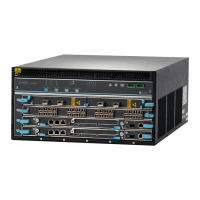
